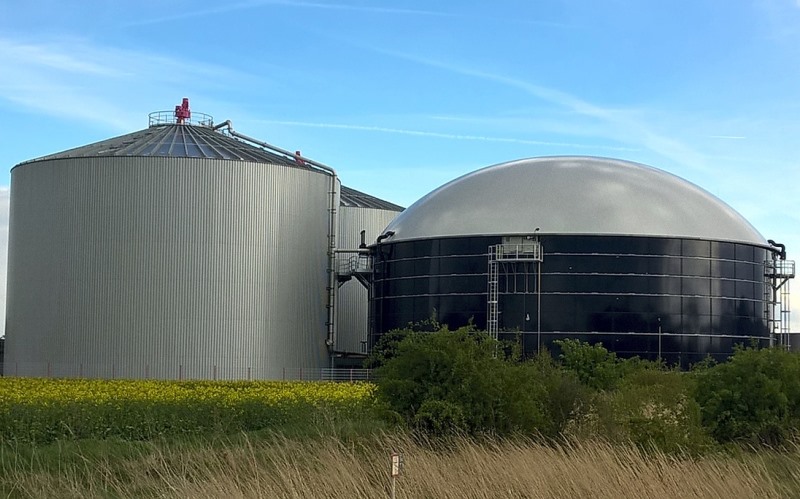What Role Can Biotechnology Play in Biogas Production

Biogas is a type of biofuel that is produced naturally from the decomposition of organic waste. Raw materials for producing biogas include agriculture waste, municipal waste, animal waste material, etc. Organic waste break down in an anaerobic environment (an environment absent of oxygen) and release a blend of gases, primarily methane which is used as a fuel. In India, it is also known as Gobar Gas, since it was primarily produced using cow dung (called gobar in Hindi).
Biogas has has been used as a domestic cooking fuel in villages in India for years. It is also used as a source of energy fuel for industrial heating, combined heat and power (CHP) generation and as a fuel for vehicles. Biogas is considered to be a renewable resource because the production and use cycle is continuous and it does not generate any net carbon dioxide. As it is produced from natural waste products such as animal dung and waste material, the source of this fuel is never going to run out. In a world suffering from the damage caused by the burning of fossil fuels, biogas is a most welcome renewable alternative.
The production of biogas can be the answer for nations that struggle to provide employment for all of its people. Biogas plants are creating employment opportunities for people across all types of communities. In the rural areas people can benefit in many ways. It will create job opportunities and also help produce cheap electricity for homes and businesses that have previously been without it. Being cheap to produce and easy to set up in a small area and a business generating biogas can be a profitable one.
What Role Can Biotechnology Play?
Biogas which has been traditionally used for cooking and heating purposes has evolved with time. Modern technology has increased the utility of biogas for other purposes accessible and efficient. There are a variety of options available and there is a need to explore the use of biogas especially for a country like India. However, some key challenges still remain.
A key hindrance to the efficient conversion of organic matter into biogas is linked to the digestion process. Recalcitrance of lignocellulosic material forms a major obstacle for obtaining maximum biogas production. The use of biological pretreatment and bioaugmentation for enhancing the performance of anaerobic digestion is quite recent and still needs to be investigated.
With biofuels gaining importance, the bio-methanization of energy crops through mono-digestion for continuous production of renewable biogas is another direction of research into the successful use of biogas. Codigestion of manure and organic waste is another strategy that the field of Biotechnology needs to research on to make Biogas a more viable option. Biotechnology should be used in such a manner that any and all kind of farm waste can easily be converted into Biogas without creating or leaving any kind of harmful gases or by-products.
A biogas plant is also a source of fertilizers. The digested substrate, usually named digestate, is a valuable soil fertiliser used by farmers. It is rich in nitrogen, phosphorus, potassium and micronutrients, which can be applied on soils with the usual equipment for application for the production of liquid manure. Compared to raw animal manure, digestate has improved fertiliser efficiency due to higher homogeneity and nutrient availability, better carbon/nitrogen ratio and significantly reduced odours. There is need for Biotechnology to be deployed in further refining this digestate.
The use of biogas has many environmental benefits. This green technology provides effective use of accumulated animal waste from food production and of municipal solid waste from urbanization. The conversion of organic waste into biogas reduces production of methane, as efficient combustion replaces the methane with carbon dioxide. The removal of hydrogen sulphide takes place in a biological desulphurization unit in which a limited quantity of air is added to biogas in the presence of specialized aerobic bacteria which oxidizes hydrogen sulphide into elemental sulfur. This is yet another scope for biotechnology to pitch in and make this process more efficient. A combination of biotechnology with the age-old technique of biogas use can indeed be an example of technology development for sustainable development.




One thought on “What Role Can Biotechnology Play in Biogas Production”